Sorted by date Results 176 - 200 of 392

The path that Greg Lein and Matthew Capps shared with the Alabama Department of Conservation and Natural Resources' (ADCNR) State Parks Division is now diverging. Lein, the State Parks Director for the past 12 years is retiring, and Matthew Capps, former Deputy Director, has been promoted to State Parks Director. While preparing for the National Association of State Parks Directors Conference that is being held at Gulf State Park this week, Lein shared his vision of State Parks when he became...
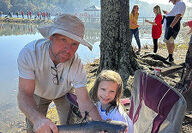
The Wildlife and Freshwater Fisheries (WFF) Division of the Alabama Department of Conservation and Natural Resources (ADCNR) will temporarily close Claiborne Public Boat Ramp on the Alabama River off Highway 84 near Monroeville for renovations beginning Wednesday, September 25, 2024. During the closure a new two-lane launching slab will be installed. The parking lot will also be expanded by approximately three times its current size. The renovations are expected to be completed in approximately...

Are you looking for an opportunity to get outside with friends and family and do something that benefits your community and the environment? If so, you are encouraged to take part in the state's largest single-day volunteer cleanup event, the 37th Annual Alabama Coastal Cleanup. The event will take place in Baldwin and Mobile counties on September 21, 2024, from 8 a.m. until noon. "Without volunteers and the event sponsors, Alabama's Coastal Cleanup would not be possible," said Chris Blankenship...

September 24, 2024 - Montgomery - Pursuant to Section 9-12-28, Code of Alabama 1975 as stated by Rule 220-3-.02, the Marine Resources Division (MRD) of the Alabama Department of Conservation and Natural Resources (ADCNR) will open certain areas of public oyster bottoms for weekday harvest beginning on Monday, October 7, 2024, from 7 a.m. to 2 p.m. Harvesters can view their locations and the open harvest areas with Alabama's Oyster Management Station (OMS) Oyster Grid Map (see attached graphic)....
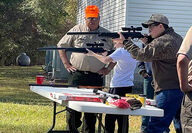
Alabama hunters are apparently more aware of the safety aspects of climbing a tree during hunting season. During the 2023-2024 season, only six treestand accidents were reported, down significantly from the average. Unfortunately, Alabama's two years without a hunting fatality ended with two this past season. Michael Bloxom, Hunter Education Coordinator with the Alabama Department of Conservation and Natural Resources' (ADCNR) Wildlife and Freshwater Fisheries (WFF) Division, said the first...

I don’t how many times I have crossed a ridge thinking I was some place that I wasn’t. I don’t how many times I have crested a hill thinking I’ll be able to see something I didn’t. I don’t know how many times I have rounded a bend to discover an additional path to the place I was going. I recognize this truth weekly. One of my hobbies is cycling. I’ve been riding for several years, and sometimes the places I ride are difficult. As a result, I’m always looking around the corner thinking I have...

The U.S. Army Corps of Engineers (USACE) will host public meetings in Florence, Nashville and online in August 2024 to discuss a pilot project designed to manage and prevent the spread of invasive carp within the Tennessee and Cumberland river basins and the Tennessee-Tombigbee waterway. During the meetings, state and local officials and USACE representatives will be available to take questions about the proposed invasive carp deterrent projects. Alabama anglers, boaters and local residents are...
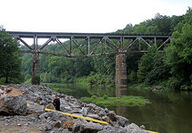
One of Alabama's most popular paddling destinations recently received a significant upgrade. State and local officials celebrated the opening of the renovated Garden City River Park with a ribbon-cutting ceremony on July 24. The renovations were made possible by a settlement against Tyson Farms for a wastewater spill into the Mulberry Fork of the Black Warrior River. The spill occurred in 2019 at Tyson Farms' River Valley chicken processing plant in Hanceville when a pipe/hose failed and dumped...

The Wildlife and Freshwater Fisheries (WFF) Division of the Alabama Department of Conservation and Natural Resources (ADCNR) will temporarily close Washington County Public Fishing Lake in southwest Alabama after the discovery of an invasive aquatic plant – giant salvinia – in the lake. The lake will be closed starting August 5, 2024. One of the most aggressive aquatic plants, giant salvinia is a fast-growing invasive species that has the potential to double in size every two to four days. The...

The rain in our area has been relentless. This coming week will be the first week in several where there is hardly any rain predicted. Everyone here is praying for the possibility of sunny days with temperatures to be in the 90’s. Yes, you read that right. We are praying for sunny days and sweltering humidity with highs in the mid 90’s. It’s funny how that works. Just a few weeks ago, I saw a sign on a church marquee that implored us to pray for rain. Now, if I were to go back by that churc...
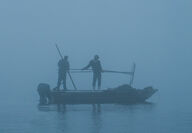
The Marine Resources Division (MRD) of the Alabama Department of Conservation and Natural Resources (ADCNR) will host an oyster meeting on Tuesday, August 27, 2024, from 1-3 p.m. at the Bayou La Batre Community and Senior Center located at 12745 Padgett Switch Rd. in Irvington, Alabama. The focus of the meeting will be to update the community about MRD activities related to the management of Alabama's oyster fisheries and to receive public input. During the meeting MRD representatives will:...

With more than $150 million available for renovations, repairs and construction, the Alabama Department of Conservation and Natural Resources' (ADCNR) State Parks System is in the middle of major upgrades and enhancements to help State Parks' guests embrace and enjoy Alabama's natural beauty. State Parks Director Greg Lein said those projects span the entire state, with upgrades planned at many of the 21 Alabama State Parks. Lein gave updates on the projects from south to north, starting with th...

The Wildlife and Freshwater Fisheries (WFF) Division of the Alabama Department of Conservation and Natural Resources (ADCNR) announces that the Mount Vernon Public Boat Ramp in Mobile County will close beginning the week of August 12, 2024. The boat landing and associated facilities will be closed for major facility upgrades. Upgrades will include a new launching slab, new access pier, expanded parking area, and a new tournament weigh-in pavilion. The facility is anticipated to be closed about...

The 2025 Outdoor Alabama Photo Contest will begin accepting entries at 9 a.m. on Tuesday, September 3, 2024. The contest is a joint project between the Alabama Department of Conservation and Natural Resources (ADCNR) and the Alabama Tourism Department. The deadline to enter is October 31, 2024. The 2025 photo contest will focus on traditional photography techniques and the use of handheld cameras. No cellphone, smartphone, game camera, or drone photography will be chosen as winning photos for...

Although it took two tiebreakers, 12-year-old Bryson McGlynn of Opelika was once again crowned a champion for his age-defying culinary skills. Last December, McGlynn won the Gordon Ramsay Master Chef Junior competition, which aired on Fox in May. Last weekend, McGlynn was crowned champion of the Alabama Wildlife Federation's Wild Game Cook-Off State Finals at Millbrook. Cooking for the Loosen Your Black Belt Bunch team that advanced to the finals after winning the Tri-County regional competition...
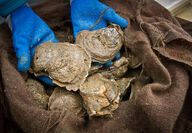
The Alabama Department of Conservation and Natural Resources (ADCNR) announced today that extensive oyster restoration in Coastal Alabama will continue with funding through the Deepwater Horizon Natural Resources Damage Assessment Program (NRDA). ADCNR Commissioner Chris Blankenship serves as the Lead Trustee for Alabama. ADCNR recently received approval of $7 million for oyster restoration under the NRDA Regionwide Trustee Implementation Group Restoration Plan I. These funds will be used for th...

For those who didn't grow up with hunting as part of their family experience, Alabama's Adult Mentored Hunting (AMH) program teaches all the skills needed to put wild game on the dinner table and help start new traditions. Getting started in the AMH program is as simple as signing up for a Hunting 101 workshop. Registration is currently open. The first workshop of the 2024-2025 season will take place near Birmingham at the William R. Ireland-Cahaba River Wildlife Management Area (WMA) on...
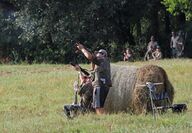
The Wildlife and Freshwater Fisheries (WFF) Division of the Alabama Department of Conservation and Natural Resources (ADCNR) provides several youth dove hunt opportunities throughout the state each fall. A simple hunting setup combined with a fun, family-friendly atmosphere makes WFF's youth dove hunts an ideal way to introduce young people to the outdoors. Registration for this year's hunts will open at 8 a.m. on August 26, 2024. Although the hunts are free, online registration is required....

The Alabama Department of Conservation and Natural Resources (ADCNR) recently acquired 79 acres of undeveloped land adjacent to the Beach Club Resort on the Fort Morgan Peninsula. This acquisition adds to extensive acreage that ADCNR and its partners already purchased on the peninsula with Deepwater Horizon Oil Spill Funds, including the Gulf Highlands property acquired in 2018. The combined area of the Gulf Highlands and Beach Club West properties includes nearly 200 acres, with more than...
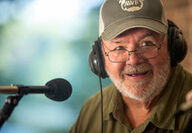
Big in stature, Big in influence and Big in promoting his beloved Alabama Black Belt, the late James "Big Daddy" Lawler was honored and remembered Tuesday at Roland Cooper State Park on the banks of Millers Ferry Lake on the Alabama River. Lawler, who died earlier this year after a short illness, was a champion of anything outdoors related, especially if it happened in the Black Belt. Lawler successfully lobbied for a T-pier at Roland Cooper to accommodate larger fishing tournaments, and...
The Wildlife and Freshwater Fisheries (WFF) Division of the Alabama Department of Conservation and Natural Resources (ADCNR) will temporarily close the Riverview Public Boat Ramp on the Warrior River in Tuscaloosa for repairs and maintenance on Tuesday, September 3, 2024. During the closure a new launching slab will be installed to address existing erosion issues. The repairs are expected to be completed in approximately two months. A reopening date will be announced when available. Partial funding for this project was provided through the...
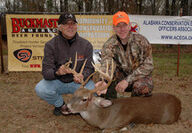
With the annual Buckmasters Expo in the rearview, Buckmasters founder and CEO Jackie Bushman is leading the organization into the modern era with numerous changes, including its address. Buckmasters headquarters moved from the eastern edge of Montgomery to the Sterling Centre on Carmichael Road about six weeks ago, indicating a significant shift in the organization's operations. "We have condensed our staff," said Bushman recently as the arena for the Bulls & Buckmasters event was being set up...

My first visit to the Davis Ranch in the Dallas Texas area was in 2013. There I met several men including John Davis, the owner. We hit it off almost immediately. It was not too long after that, I began flying there a couple times a year to do hunting and speaking events with a small group of men. That place holds a lot of great memories. It was there I took my first Rio turkey. It was there I harvested several pigs. And it was there where I met the most amazing men, many who have become lifelon...

A new dock and boardwalk, a new live weigh-in category and a new species for catch and release are among the highlights for the 91st annual Alabama Deep Sea Fishing Rodeo (ADSFR), set for July 19-21 at the rodeo site on Dauphin Island. The new dock and boardwalk will increase the capacity for the number of boats that can be tied up to head to the weigh-in station, and the boardwalk will also provide access to the north side of the rodeo property. "We added a dock 7 to help alleviate pressure...
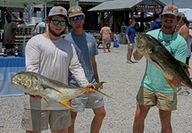
On Tuesday, a partnership of conservation groups, state agencies and private partners will hold a ribbon cutting on a new boat launch, transient docks, and a tournament pavilion in Selma. This project was accomplished through a partnership that includes the Alabama Department of Conservation and Natural Resources (ADCNR), Innovate Alabama, the Alabama Department of Environmental Management (ADEM), the U.S. Fish and Wildlife Service (USFWS), the Alabama Wildlife Federation (AWF), B.A.S.S.,...